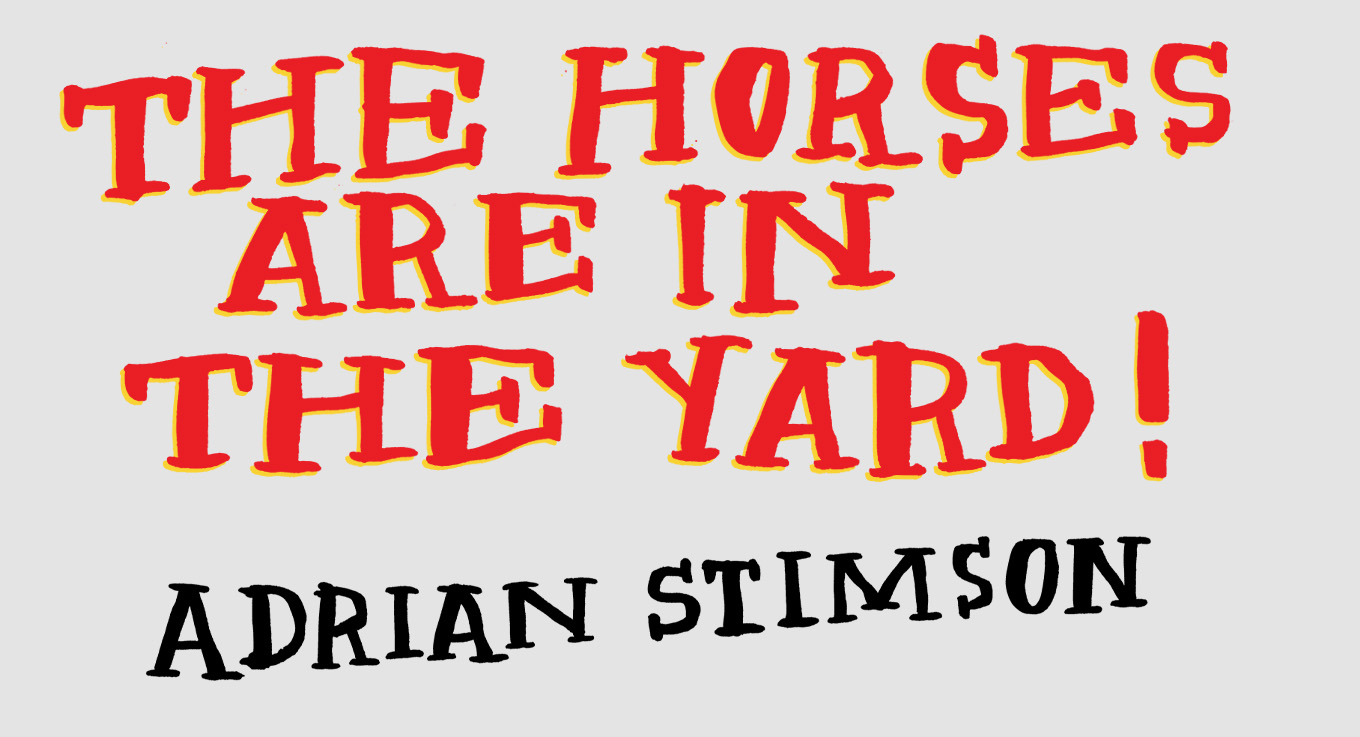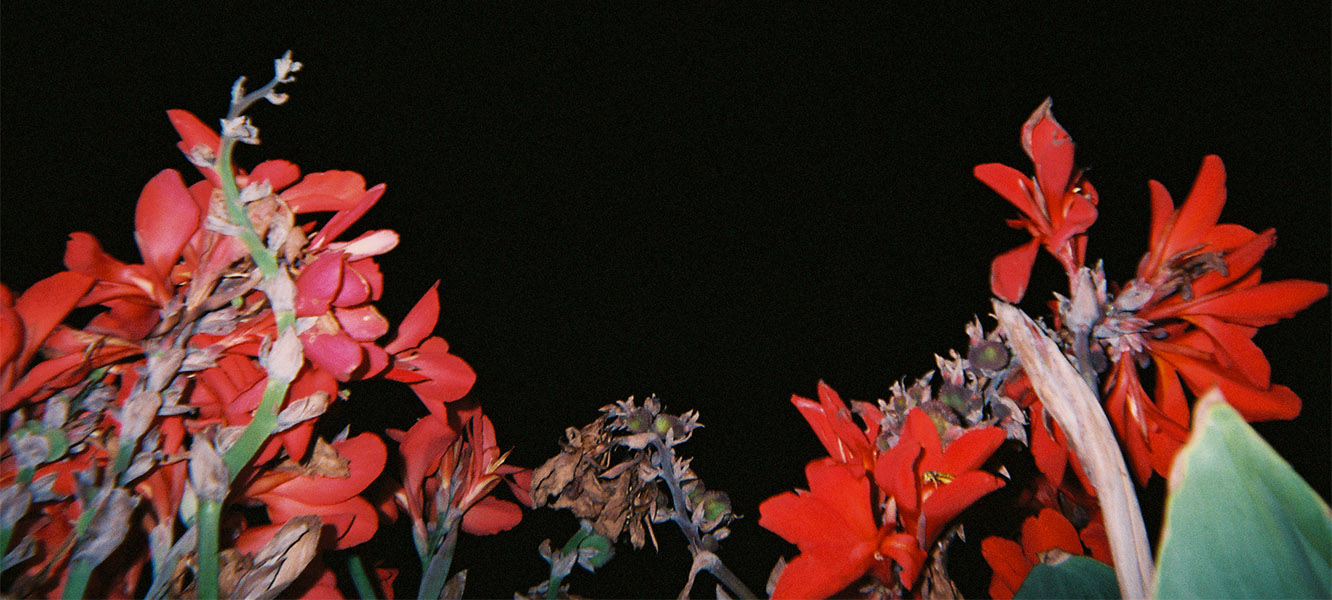



“The horses are in the yard!” is an alarm that has resounded throughout my life. Living in the former Old Sun Residential School Garden, which is situated in North Camp on the Siksika Nation, we are surrounded by pastureland. Neighbours use this pasture for their cattle and horses in the warm months of the year, and some of the horses stay all year ‘round. We have a barbed wire fence that surrounds our treed yard with gates that we open and close but, sometimes the horses see that the gates are open, and see the greener grass, and they see an invitation to graze. They can do damage, so we try to keep them on the other side of the fence, yet they always manage to infiltrate from time to time, hence the alarm when they do. Sometimes I let them in, keep an eye on them—I figure it is better having them cut and fertilize the grass the natural way.
For many First Nations, the horse is a symbol of strength and freedom. The Blackfoot call the horse “ponokaomita,” Elk dog named in relation to the Elk, “ponoka” and dog “Imita.” While it is claimed that the horse was introduced to the Americas through Spanish conquest, Indigenous people know that the horse has always been here. There are stories of relations with horses in many tribes, confirmed through petroglyphs, horse figurines, and horse society stories. Further, modern Western science has confirmed through DNA in fossils, and through the oldest found skeleton of a horse (found in 1830 by paleontology pioneer Joseph Leidy) that horses have indeed always been here. Small horses, “Caballus,” once roamed North America 1.7 million years ago—it is speculated that this species went extinct in the Ice Age. Yet, who is to say that some of these small horses didn’t survive, evolve and become the horses we know today. Indigenous people know this history through the stories passed down through time immemorial.
Horses have always been in my life; there is an image of me on a horse with a fellow Blackfoot dressed in his regalia at the Calgary Stampede in 1968. My father’s Blackfoot name is “Kayistisitpiimiyohkitopi,” which translates to “Riding a spotted horse,” or “Pinto Rider.” The name was given to him when he was, as my auntie Yvonne says, an “old man,” but there remains some mystery about the actual naming story. I think it’s pretty obvious that he was an accomplished rider, and that he had a Pinto.
Horses are often given as gifts between Nation members, and there are several large herds on Siksika. When I was younger, we had two horses: part Arabian, Keno given to my dad by his friend Dan and then Dan gave me colt Gaviston as a graduation gift. We built stables and they lived in our yard for several years, yet we never rode them. We had to give them up when they started to break free and follow my mum to work—it became too much for her to take care of them as my dad and I were often away on business. We decided to give them to a friend who had a farm in Northern Alberta. She called often to tell us that they were doing fine.
As I get older and am home more, I desire to have horses again; perhaps in the coming years, we will. I know my cousin Trish and her husband Art have a herd up the hill that they use for their trail riding business—these are the horses that are often grazing around our home. When we decide that we can handle raising horses again, perhaps we will approach Trish and get a couple colts to raise and eventually ride. The countryside around my home is well suited for trail riding.
Ponokaomitaiks are deeply entrenched and loved by the Blackfoot: we adorn them with beaded regalia that matches familial designs. They are our helpers, our spirit guides, and our friends. They have always been with us and have inspired many stories. Looking into the eyes of the horse, I am always reminded that they are the biggest eyes of all land mammals. A deep reflection occurs, like they are reaching into our beings and asking us to remember them: to honour them, to sing to them, to listen to them, to learn from them, to be with them, to become one with them, and to love them. In return they will become a part of us. I have heard that an Indigenous person without a horse is not complete. I believe this.
The Blackfoot story of the origin of the horse really encapsulates this all: as an orphaned and abandoned boy, Long Arrow was adopted by the elder Good Running. Upon reaching manhood, Long Arrow asked Good Running how he could repay him. Good Running told him of a spirit people at the bottom of a distant lake who had an unknown animal, swift as an elk but also a burden-carrier, like a dog. It was called ponoka-mita (Elk Dog). Long Arrow found the lake and met a young spirit who took him to the bottom, where the spirit grandfather lived. The young spirit told Long Arrow to watch for a glimpse of the old man’s feet, which he kept hidden under his long black robe. If Long Arrow saw them, the old man would grant his request. After four days, the old man’s robe caught on a post, and Long Arrow saw that he had hoofs like the Elk Dogs. The old man was the master of the Elk Dogs. Long Arrow asked for three things: the black robe that prevented horses from running away, a rainbow-colored quilled belt that carried Elk Dog dance songs and prayers, and a herd of the animals. The old man granted the requests and also gave Long Arrow a magic rope to catch the Elk Dog. And so the Blackfoot have been horse-people ever since.
Adrian Stimson is a member of the Siksika (Blackfoot) Nation in southern Alberta. He is an interdisciplinary artist and exhibits nationally and internationally.


“The horses are in the yard” is an alarm that has resonated throughout my life. Living in the former Old Sun Residential School Garden, which is situated in North Camp on the Siksika Nation we are surrounded by pastureland. Neighbours utilize this pasture for their cattle and horses in the warm months of the year, some of the horses stay all year long. We have a barbed wire fence that surrounds our treed yard with gates that we open and close, sometimes the horses see the gates are open and the greener grass, it’s an invitation to graze. They can do damage and we try to keep them on the other side of the fence, yet they always manage to infiltrate from time to time, hence the alarm when they do. Sometimes I let them in, keep an eye on them, I figure it is better having them cut and fertilize the grass in the natural way.
For many First Nations, the horse is a symbol of strength and freedom. The Blackfoot call the horse “ponokaomita,” Elk dog named in relation to the Elk, “ponoka” and dog “Imita.” While it is claimed that the horse was introduced to the Americas through Spanish conquest, Indigenous people know that the horse has always been here. There are stories of relations with horses in many tribes, confirmed through petroglyphs, horse figurines, and horse society stories. Further, modern Western science has confirmed through DNA in fossils, and through the oldest found skeleton of a horse (found in 1830 by paleontology pioneer Joseph Leidy) that horses have indeed always been here. Small horses, “Caballus,” once roamed North America 1.7 million years ago—it is speculated that this species went extinct in the Ice Age. Yet, who is to say that some of these small horses didn’t survive, evolve, and become the horses we know today. Indigenous people
know this history through the stories passed down through time immemorial.
Horses have always been in my life; there is an image of me on a horse with a fellow Blackfoot dressed in his regalia at the Calgary Stampede in 1968. My father’s Blackfoot name is “Kayistisitpiimiyohkitopi,” which translates to “Riding a spotted horse,” or “Pinto Rider.” The name was given to him when he was, as my auntie Yvonne says, an “old man,” but there remains some mystery about the actual naming story. I think it’s pretty obvious that he was an accomplished rider, and that he had a Pinto.
Horses are often given as gifts between Nation members, and there are several large herds on Siksika. When I was younger, we had two horses: part Arabian, Keno was given to my dad by his friend Dan and then Dan gave me colt Gaviston as a graduation gift. We built stables and they lived in our yard for several years, yet we never rode them. We had to give them up when they started to break free and follow my mum to work—it became too much for her to take care of them as my dad and I were often away on business. We decided to give them to a friend who had a farm in Northern Alberta. She called often to tell us that they were doing fine.
As I get older and am home more, I desire to have horses again; perhaps in the coming years, we will. I know my cousin Trish and her husband Art have a herd up the hill that they use for their trail riding business—these are the horses that are often grazing around our home. When we decide
that we can handle raising horses again, perhaps we will approach Trish and get a couple colts to raise and eventually ride. The countryside around my home is well suited for trail riding.
Ponokaomitaiks are deeply entrenched and loved by the Blackfoot: we adorn them with beaded regalia that matches familial designs. They are our helpers, our spirit guides, and our friends. They have always been with us and have inspired many stories. Looking into the eyes of the horse, I am always reminded that they are the biggest eyes of all land mammals. A deep reflection occurs, like they are reaching into our beings and asking us to remember them: to honour them, to sing to them, to listen to them, to learn from them, to be with them, to become one with them, and to love them. In return they will become a part of us. I have heard that an Indigenous person without a horse is not complete. I believe this.
The Blackfoot story of the origin of the horse really encapsulates this all: as an orphaned and abandoned boy, Long Arrow was adopted by the elder Good Running. Upon reaching manhood, Long Arrow asked Good Running how he could repay him. Good Running told him of a spirit people at the bottom of a distant lake who had an unknown animal, swift as an elk but also a burden-carrier, like a dog. It was called ponoka-mita (Elk Dog). Long Arrow found the lake and met a young spirit who took him to the bottom, where the spirit grandfather lived. The young spirit told Long Arrow to watch for a glimpse of the old man’s feet, which he kept hidden under his long black robe. If Long Arrow saw them, the old man would grant his request. After four days,
the old man’s robe caught on a post, and Long Arrow saw that he had hoofs like the Elk Dogs. The old man was the master of the Elk Dogs. Long Arrow asked for three things: the black robe that prevented horses from running away, a rainbow-coloured quilled belt that carried Elk Dog dance songs and prayers, and a herd of the animals. The old man granted the requests and also gave Long Arrow a magic rope to catch the Elk Dog. And so the Blackfoot have been horse-people ever since.

Adrian Stimson is a member of the Siksika (Blackfoot) Nation in southern Alberta. He is an interdisciplinary artist and exhibits nationally and internationally.